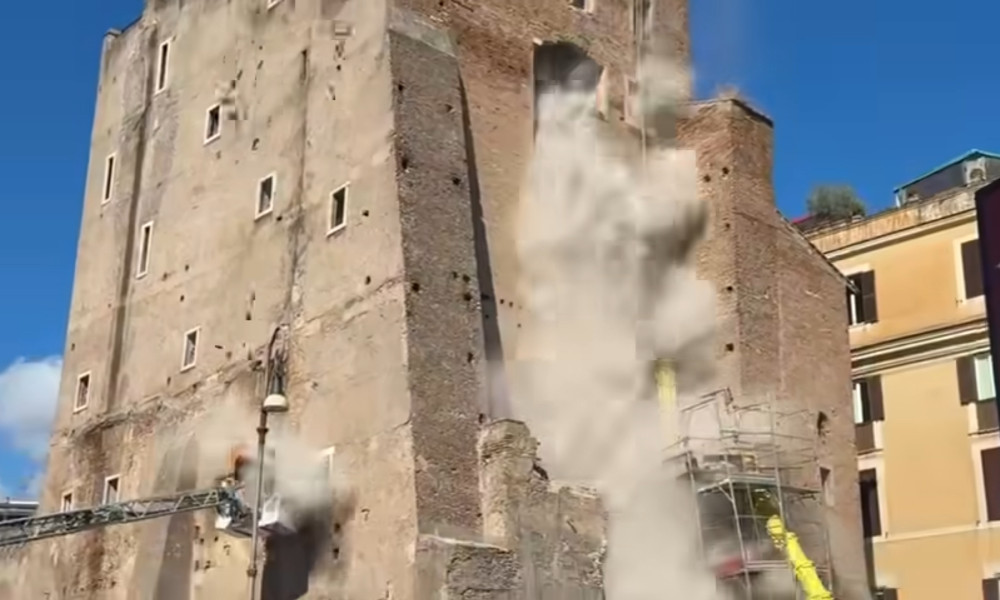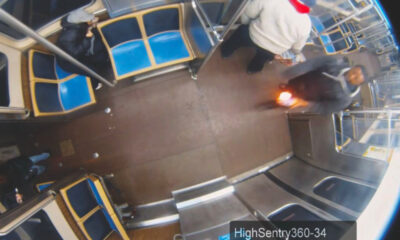World
Worker dies after collapse at historic tower in central Rome

A worker was killed and several others were injured when part of a historic tower in central Rome collapsed during renovation work, according to local officials.
The collapse happened at around 11:20 a.m. on Monday at the Torre dei Conti, a centuries-old structure located near the Roman Forum and the Colosseum.
The victim, identified as 57-year-old Octay Stroici from Romania, was pulled alive from the debris after more than 11 hours but later died from his injuries, Corriere della Sera reported. Four other workers who were trapped on an upper level were rescued shortly after the initial collapse.
A second collapse took place around 1 p.m. as firefighters worked to secure the area. The Volunteer Fire Brigade of Rome said debris suddenly began to fall, and one firefighter suffered eye irritation and was taken to a hospital for treatment.
Prosecutors in Rome have opened an investigation, first on suspicion of negligence and later expanded to include negligent disaster. Experts will be appointed to determine what caused the structure to give way.
According to Corriere della Sera, cultural heritage officials said the collapse began in a supporting wall on the southern side of the tower, which caused part of the base to fail. The second collapse damaged a stairwell and roof area.
The Torre dei Conti has been closed to the public since 2007 and was undergoing a $7.4 million restoration as part of Italy’s “Caput Mundi” recovery plan. The work, which began in June, included structural reinforcement, preservation efforts, and plans to convert the building into a museum and cultural center.
The Torre dei Conti is one of Rome’s oldest and most recognizable medieval towers. Built in 1203 by Pope Innocent III for his powerful family, the Counts of Segni, it originally rose more than 160 feet above the surrounding ruins, making it one of the tallest structures in medieval Rome.
Over the centuries, the tower survived earthquakes, wars, and repeated reconstruction efforts. It served at various times as a noble residence, a fortress for papal troops, a prison, and later an astronomical observatory said to have been used by Galileo Galilei in the 17th century, according to Corriere della Sera.
It stands near some of the city’s most famous landmarks in the archaeological heart of Rome.

-

 World2 days ago
World2 days agoEthiopian volcano erupts for first time in thousands of years
-

 Legal1 week ago
Legal1 week agoMichigan man JD Vance sentenced to 2 years for threatening Trump and JD Vance
-

 Politics1 week ago
Politics1 week agoU.S. to designate Maduro-linked Cartel de los Soles as terrorist organization
-

 Health1 week ago
Health1 week agoCambodia reports fatal H5N1 bird flu case in 22-year-old man
-

 Legal6 days ago
Legal6 days agoWoman in critical condition after being set on fire on Chicago train
-

 World6 days ago
World6 days agoHurricane Melissa registered 252 mph wind gust, breaking global record
-

 Politics1 week ago
Politics1 week agoEpstein survivors release PSA calling on Congress to release all files
-

 Legal5 days ago
Legal5 days agoSuspect in San Diego stabbing shot by authorities after fleeing into Mexico




